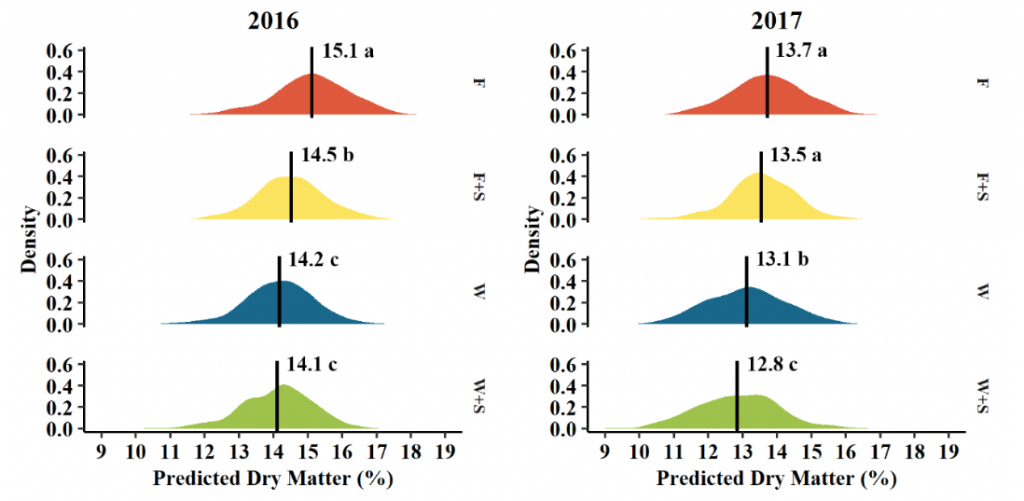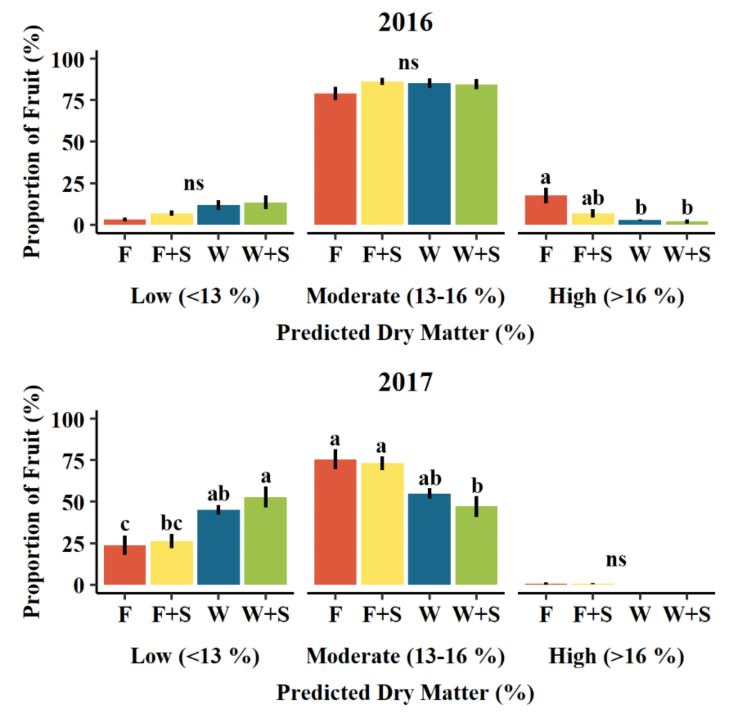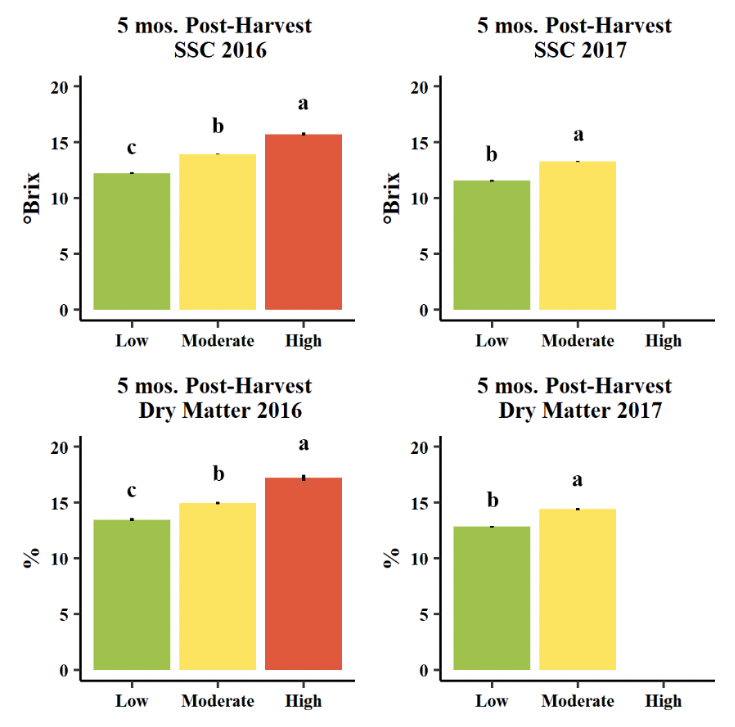Written by Alex Goke, Sara Serra, Stefano Musacchi; WSU Wenatchee Tree Fruit Research and Extension Center; July 2020.
Published article available here (may be subject to subscription fees)
Fruit dry matter is becoming a prominent thought in growers’ minds as accumulating research suggests a direct connection between fruit dry matter content and consumer liking among numerous tree fruit commodities. The dry matter metric characterizes the fruit in terms of its sugar and starch content that contribute to fruit sweetness, as well as the fibers, proteins, and acids that compose fruit flavor and texture. In other words, dry matter is everything left after all the water is removed from the fruit. These properties enable dry matter to be used to describe both at-harvest and post-storage fruit quality but also determine how consumers may like the fruit or even how much they may pay for it.
New work from the WSU Tree Fruit and Extension Center’s Tree Physiology and Orchard Management Laboratory attempts to increase the quality of d’Anjou pears by finding ways for growers to manipulate dry matter in the field. Since dry matter is accumulated in the fruit from photosynthesis, increasing light penetration into the canopy at different times of the year using targeting pruning practices could potentially lead to higher dry matter fruit at the time of harvest. To test this, a sixteen-year-old d’Anjou/OHF87 trees (trained at the central leader and spaced 14 ft x 7 ft) have been pruned during either the fall or winter seasons in 2016 and 2017 to see if there was a difference in dry matter production at harvest time. Summer pruning was also added to either fall or winter pruning to test if this would further help increase dry matter through greater light penetration into the canopy during the growing season. During harvest, fruit were evaluated non-destructively for predicted dry matter content using a near-infrared spectrometer that was previously calibrated for d’Anjou pear and classified as either low (< 13 % dry matter), moderate (13 – 16 %), or high (> 16%) predicted dry matter fruit following previous work showing > 16% dry matter pears were most liked by consumers. These fruit quality categories were then evaluated for average firmness and sugar content after 5 months after harvest following cold storage and 7 days of ripening at room temperature.

Among all the four pruning treatments tested (F: fall pruning, F+S: fall and summer pruning, W: winter pruning, and W+S: winter and summer pruning) it was found that fall pruning produced the greatest average dry matter content (15.1% in 2016 and 13.7% in 2017, Fig. 1). Fall pruning was also the best pruning treatment in terms of having the greatest abundance of high (> 16%) dry matter fruits, though very few high dry matter fruits were produced in 2017 perhaps due to unfavorable growing conditions that year (Fig. 2).
Summer pruning performed in June (just a waterspout removal) determined lower average of dry matter and lower abundances of high (> 16%) dry matter fruits when compared to either fall or winter pruning alone (Figs. 1 and 2). This may be due to the reduced net photosynthetic production from removing leaves during the summer pruning cycles.


In terms of fruit quality, high (> 16%) dry matter fruits retained the most dry matter after 5 months of cold storage and 7 days of room temperature ripening (Fig. 3). This greater dry matter content was associated with higher fruit quality as conferred by higher sugar content in the fruit (Fig. 3), meaning these fruits are more likely to be favored by consumers and perhaps even purchased at a higher price point based on researchers’ previous findings.
This work illustrates how higher quality yields can be obtained in d’Anjou pear through targeted seasonal pruning practices result in both greater mean dry matter but also a higher abundance of high dry matter fruits at harvest time. These higher dry matter fruits were also proven to be more favorable in terms of sugar content, ensuring a more positive consumer eating experience with a greater likelihood of repeated purchasing.
Contact
 Sara Serra
Sara Serra
Assistant Research Professor
WSU Wenatchee TFREC
sara.serra@wsu.edu
treefruit.wsu.edu articles may only be republished with prior author permission © Washington State University. Republished articles with permission must include: “Originally published by Washington State Tree Fruit Extension at treefruit.wsu.edu” along with author(s) name, and a link to the original article.